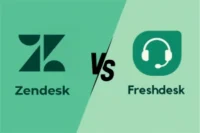DPI vs PPI: Understanding the Key Differences
Published: 20 Mar 2025
When dealing with images, resolution plays a crucial role in determining quality, whether on a screen or in print. Two common terms often confused are DPI (Dots Per Inch) and PPI (Pixels Per Inch). While both relate to image clarity, they serve different purposes.
DPI is primarily used in printing, affecting how detailed an image appears on paper, while PPI is used for digital screens, impacting how sharp an image looks. Understanding the difference between DPI and PPI helps in choosing the right settings for printing, designing, and digital displays.
This article will explore the key differences between DPI vs PPI, their applications, and their impact on image quality.

Quick Comparison Table: DPI vs PPI
This table provides a quick and clear comparison of DPI vs PPI!
| Feature | DPI (Dots Per Inch) | PPI (Pixels Per Inch) |
| Definition | Measures print resolution (dots per inch in printed material). | Measures screen resolution (pixels per inch on a display). |
| Used In | Printing (printers, scanners, physical media). | Digital screens (monitors, smartphones, images). |
| Impact On | Print quality and sharpness. | Screen resolution and image clarity. |
| Measurement Unit | Dots per inch (physical ink dots). | Pixels per inch (digital display pixels). |
| Adjustability | Can be changed when printing for better quality. | Set by screen hardware; cannot be changed manually. |
| Higher Value Means | More detailed prints with smoother edges. | Sharper, more detailed screen images. |
| Best For | Printers, posters, and physical artwork. | Digital displays, web images, and photography. |
Differences between DPI and PPI
Let’s explain the differences between DPI and PPI in detail:
1. Definition
DPI and PPI define different aspects of resolution, one related to printing and the other to digital screens.
DPI (Dots Per Inch)
- Refers to the number of printed dots within one inch of a printed image.
- Determines the print quality and sharpness of physical media.
- Higher DPI values result in finer, more detailed printed images.
- Used in printers, scanners, and other physical media.
- Common DPI values include 300 DPI (high-quality print) and 600 DPI (professional print).
PPI (Pixels Per Inch)
- Refers to the number of pixels displayed per inch on a digital screen.
- Affects the sharpness and clarity of on-screen images.
- Higher PPI values result in sharper and more detailed digital images.
- Used in monitors, smartphones, and digital images.
- Common PPI values include 72 PPI (web images) and 300 PPI (high-resolution images).
2. Application
DPI and PPI are used in different fields based on their impact on image quality.
DPI Applications
- Printing high-quality images and documents.
- Designing for magazines, posters, and physical media.
- Creating professional photography prints.
- Determining printer resolution capabilities.
- Ensuring images maintain quality when printed.
PPI Applications
- Displaying images on computer screens and mobile devices.
- Creating digital artwork and designs.
- Ensuring sharpness in web graphics and social media posts.
- Optimizing image quality for high-resolution monitors.
- Enhancing visual quality in video games and digital content.
3. Measurement and Units
DPI and PPI are measured differently based on their respective technologies.
DPI Measurement
- Measured in dots per inch (DPI).
- Determines how many dots a printer places in a single inch.
- Can be adjusted based on printer settings.
- Higher DPI settings lead to smoother, high-quality prints.
- Lower DPI settings can cause pixelation or blurry prints.
PPI Measurement
- Measured in pixels per inch (PPI).
- Defines pixel density on a digital screen.
- Affects image clarity on displays.
- Higher PPI provides better image sharpness.
- Lower PPI can cause visible pixelation.
4. Impact on Image Quality
DPI and PPI influence image quality differently depending on their usage.
How DPI Affects Image Quality
- Affects the detail and sharpness of printed images.
- High DPI ensures smooth color gradients and fine details.
- Low DPI may lead to blurry or pixelated prints.
- Professional printing requires at least 300 DPI.
- Newspaper prints often use 150 DPI due to paper limitations.
How PPI Affects Image Quality
- Determines how sharp an image appears on a screen.
- Higher PPI means clearer images with finer details.
- Low PPI may cause noticeable pixels, reducing clarity.
- High-resolution screens (like Retina displays) use high PPI values.
- Web images typically use 72 PPI for faster loading times.
5. Adjustability and Scaling
Both DPI and PPI can be adjusted, but they impact different aspects of resolution.
Adjusting DPI
- DPI settings can be changed in printer preferences.
- Increasing DPI results in higher-quality prints.
- Lowering DPI can save ink but reduces print quality.
- Requires high-resolution images for effective scaling.
- Professional printing services use optimized DPI settings for clarity.
Adjusting PPI
- PPI settings are set during image creation.
- Higher PPI images retain details but require more storage.
- Lower PPI images load faster but lose sharpness.
- Changing PPI does not affect print quality unless resized.
- Scaling images without losing quality requires high original PPI.
6. Common Misconceptions
Many people confuse DPI and PPI due to their similar-sounding names.
Misconceptions About DPI
- DPI does not affect digital image quality on screens.
- High DPI does not always mean better print quality if the image resolution is low.
- Increasing DPI in a low-resolution image will not improve its quality.
- DPI is not the same as PPI, even though both measure resolution.
- Printer DPI and screen PPI are unrelated.
Misconceptions About PPI
- PPI does not impact how an image prints unless resized.
- Increasing PPI in a low-resolution image does not improve details.
- A high PPI image can still print poorly if the DPI is low.
- PPI does not determine print sharpness, only screen clarity.
- Screens with high PPI (e.g., 4K displays) show sharper images, but this does not affect printed quality.
Choosing the Right Resolution
Selecting the correct DPI or PPI depends on the intended use of an image.
Choosing the Right DPI
- Use 300 DPI for high-quality photo printing.
- 600 DPI is best for professional and commercial printing.
- 150 DPI is sufficient for posters and banners.
- 72 DPI is not suitable for printing, only for web use.
- Higher DPI does not always improve print quality if the image resolution is low.
Choosing the Right PPI
- Use 72 PPI for web images and online graphics.
- 150 PPI is ideal for presentations and digital documents.
- 300 PPI is preferred for high-quality digital artwork.
- Higher PPI (400-600) is useful for ultra-high-resolution screens.
- Scaling down PPI can reduce file size without affecting print quality.
Conclusion
DPI and PPI are crucial for determining image resolution, but they serve different functions. DPI is essential for printing quality, ensuring clear and sharp physical images, while PPI affects digital screen clarity. Understanding these differences helps in optimizing images for different purposes, whether for web use, high-resolution displays, or professional printing.
By choosing the right DPI for printing and the appropriate PPI for digital use, users can ensure high-quality visuals in any format. Knowing when and how to adjust these settings can improve both print and digital media quality.
FAQs about DPI and PPI
Here are some of the most FAQs related to DPI and PPI:
No, PPI and DPI are different measurements. PPI is for screens, while DPI is for printing, so they cannot be directly converted.
For high-quality photo printing, 300 DPI is recommended. Professional prints may use 600 DPI or higher for extra detail.
No, DPI only affects print quality. Increasing DPI in a digital image will not change how it appears on a screen.
The image may appear blurry or pixelated because 72 PPI is too low for high-quality printing.
Yes, high PPI screens display sharper images with finer details, improving overall visual quality.
600 DPI provides finer details, but 300 DPI is usually sufficient for most professional prints.
72 PPI is used for web images to keep file sizes small while maintaining good on-screen quality.
PPI affects digital images, but for printing, DPI and image resolution are more important.
DPI measures print quality, while resolution refers to the total number of pixels in an image.
You can adjust DPI settings in your printer software or image editing programs like Photoshop.

- Be Respectful
- Stay Relevant
- Stay Positive
- True Feedback
- Encourage Discussion
- Avoid Spamming
- No Fake News
- Don't Copy-Paste
- No Personal Attacks

- Be Respectful
- Stay Relevant
- Stay Positive
- True Feedback
- Encourage Discussion
- Avoid Spamming
- No Fake News
- Don't Copy-Paste
- No Personal Attacks





